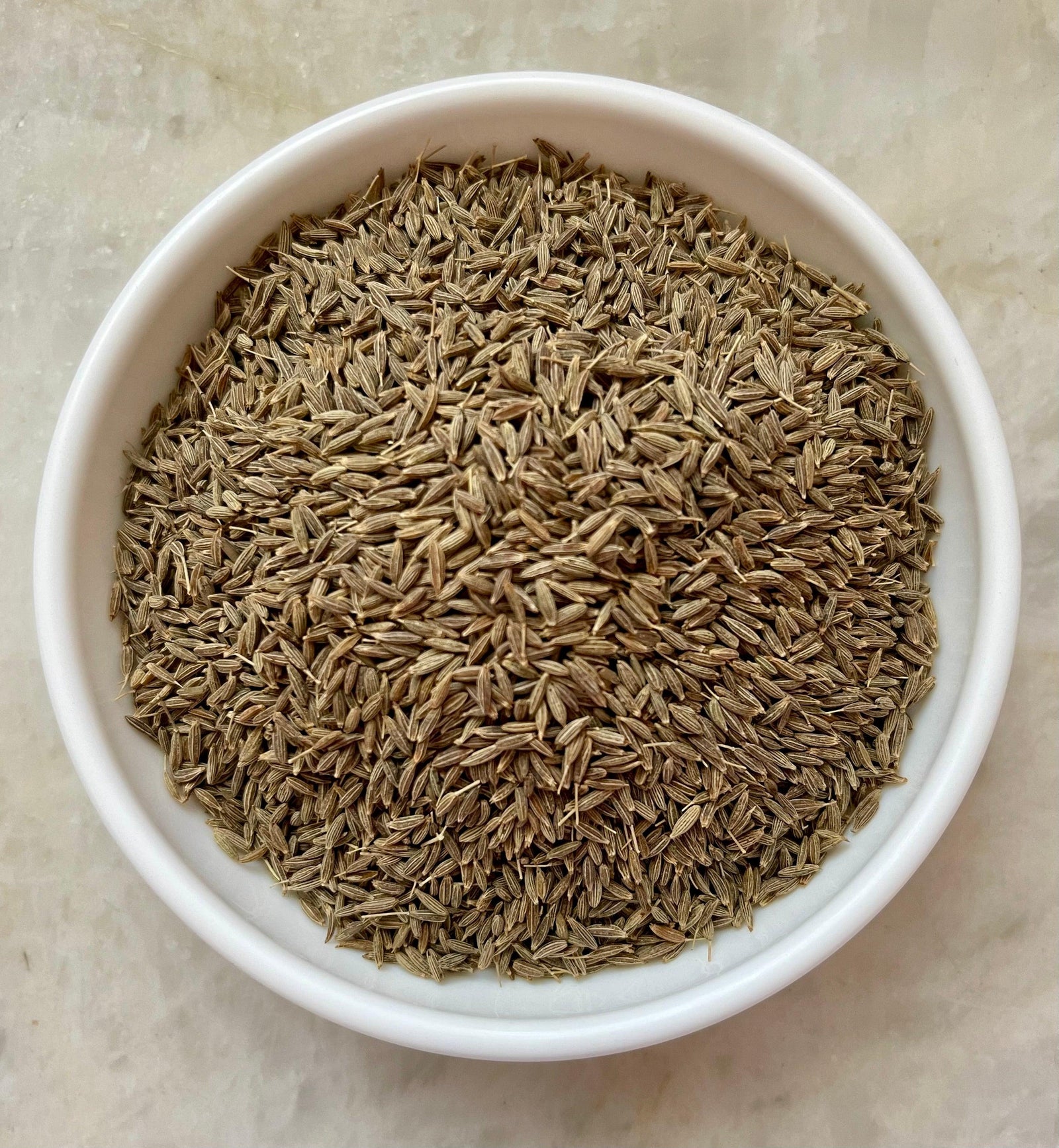July 20, 2023 1 Comment


Ah, cumin! Called jeera or zeera, these are the seeds that my childhood food memories were built upon. The very smell of cumin seeds sizzling in oil brings back vividly strong food emotions for me growing up in King of Prussia, Pennsylvania where our home on the inside was like little India. Every meal - yes, even Italian spaghetti much to my teenage frustration - began with cumin seeds roasting and toasting in a hot oil infusion. I wished that we were just 'normal' like all the other families on Anthony Rd. eating whatever they ate on any given night, but now of course I'm so glad we were not. I in turn love torturing my own girls with Indian versions of everything from pasta to pizza, simply calling it 'gourmet'.
The humble, beige and nondescript cumin seed is used in cuisine from all over India, but it is the pure essence of Punjabi cuisine. Virtually every North Indian dish begins with cumin seeds. It's a little different in South India, where mustard seeds are the go-to key spice and cumin is used to a lesser extent.
To look at, cumin seeds are nondescript and relatively boring. The magic comes when you heat them in ghee or oil or dry roast them over a low flame. Then, as the essential oils of this spice are pulled out, you'll experience all of the aromas I'm talking about. The very smell that meant my mother was cooking for a party of fifty to a hundred of our friends in our home was that cumin in warm oil mixed with onion slivers browning and caramelizing as the start to her basmati rice. When we were young and away from our families in India, our Indian friends nearby became our families and we would cram into a different home just about every weekend to connect and eat together. I never knew then how meaningful those days were, especially as our current lives get ever busier.
Cumin is believed to have entered India as incense but then was quickly used by royal chefs to spice the foods they were making. India is believed to be the first country in the world to use cumin as a spice. It has not only come to be essential to our cuisine, it is essential to our health as well.
Cumin seeds get their flavor from cuminaldehyde, a compound with medicinal qualities. One of the best effects of cumin is its ability to reduce blood sugar and thus fight the effects of diabetes. There are many other things cumin can help with including combating cancerous tumors, epilepsy, food poisoning, and tuberculosis. Cumin seeds can ease indigestion and help alleviate gas. The seeds are often boiled in water and made into a tea to help with colds and fevers. Add a little honey and it can help with a sore throat.
The effects of cumin are still being studied by scientists so do your own research. But, the point is, cumin is a wonderful spice to get into your weekly meals. It is used extensively as well in Mexican, North African, western Asian, Greek, Turkish, and Latin American cuisines as well. But in North India it takes center stage.
Cumin can be used in several forms. The whole seeds are heated in oil or ghee in a tarka; the seed can be ground first for a cumin powder that is added to soups and stews; and, the seed can be dry-roasted and ground to be used in Indian snack foods and in yogurt.
This dry-roasted cumin is what I want to focus on in this post. It is a fantastic way to get what I call 'double duty' from your spices. And, it's so incredibly simple to do. Just take a small, dry pan (no water or oil), pour a tablespoon of cumin seeds into it, and heat them until they start to turn reddish-brown. Just keep shaking the pan and keep roasting until they are beautifully browned. Be careful not to burn them. The whole process takes about 3-4 minutes. Once finished, let them cool for 5 minutes and then grind down in a mortar and pestle or a coffee grinder reserved for spices. Use immediately in a Chaat as in this recipe here, to flavor raita (yogurt), or store it to use later in a glass jar.
Watch me do it!
Some helpful resources:
Healing Spices by Bharat B. Aggarwal
Spice Story by Hugh and Colleen Gantzer
The Indian Grocery Store Demystified by Linda Bladholm
Comments will be approved before showing up.
Albert opoku
June 12, 2025
RE-TENDER SUPPLY 2025/26
Atten: Sir/Madam,
There’s on-going Tender supply of Various Spices, Red chilli, Rice cury, flakes or red pepper flakes in Ghana, If you’re interested reply for More details on how to proceed After full payment.
Thank You,
Regards Mr. Albert opoku
whatsapp +233579468040